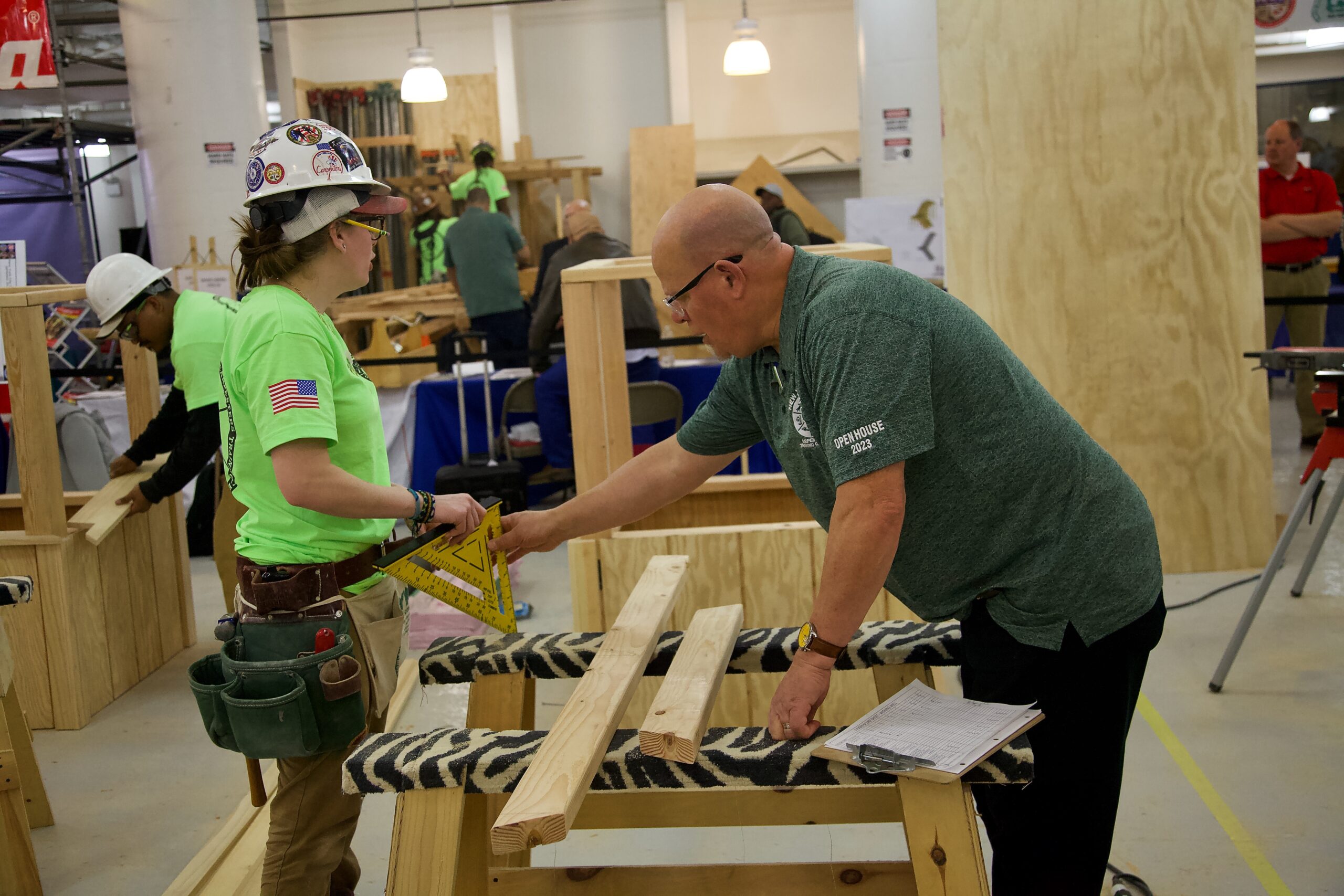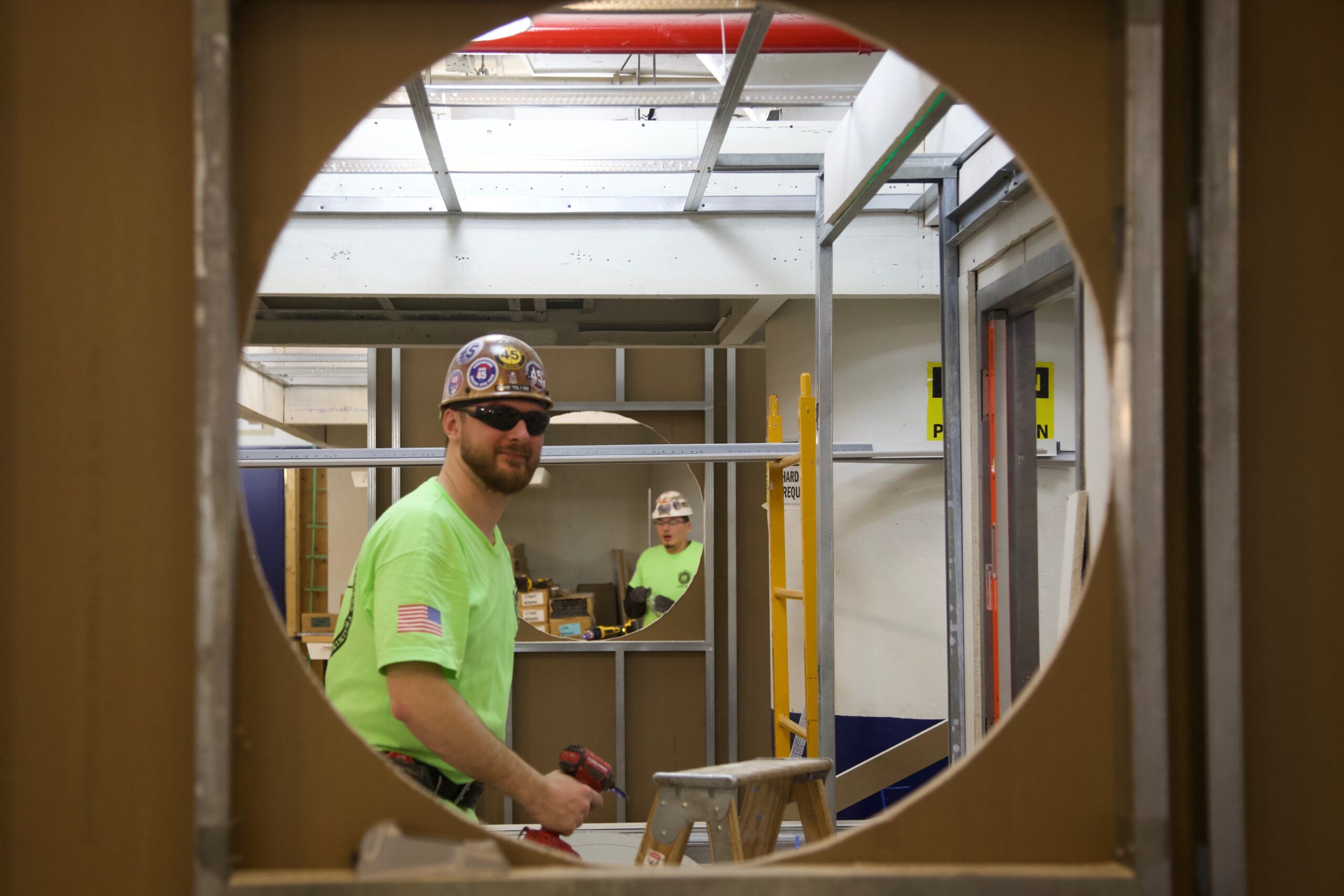The New York City District Council of Carpenters not only turned its apprenticeship graduation and annual “Golden Hammer Awards” into an open house for newcomers on Wednesday but used the event to signal how it’s taking a fresh approach to the recruitment process.
The “Golden Hammer” is a competition that the union holds for graduating apprentices to test their skills in various carpentry trades that has been going on for 52 years and serves as a hallmark of the union’s training program.
The thing that was different this year is that the carpenters worked with the city Department of Education to bus in about 200 high school students to witness the contest for themselves at the union’s training headquarters in the West Village. If the students are interested in pursuing the union further, they’ll get a first crack at the union’s new streamlined recruitment system designed to cut down on wait times and uncertainty.
“The good news for the high school students is that we are in need of construction workers. We’re in need of a future skilled workforce. People are actually retiring earlier. The baby boomers are leaving,” said James Hayes, director of training at the facility.
The state of the industry begs for a new way to usher new recruits into the program. No longer will recruits have to physically wait in a line that wraps around the block just to give the first 25 to 50 apprentices the opportunity to put their names in a hand-cranked lottery machine that determines who gets a shot at pursuing an apprenticeship.
Starting April 12th, the union will have information sessions the second and fourth Wednesday of each month from 9 to 10 a.m., where applicants will get a chance to carefully consider whether an apprenticeship is right for them and get an opportunity to finish their application online.
At the information session, participants will get evaluated in order to pinpoint people the union deems to be the most qualified. The goal is to increase retention in the program by setting expectations, which includes a four-year commitment to taking classes and accumulating 5,200 hours in the field before graduating to the status of journeyman,
“Like let’s just tell ’em the good, the bad, the ugly of being a union construction carpenter. And let’s get it all out the table,” said Hayes.
The information sessions provide both reality checks as well as the economic positives and career potential.
“When they come into the business they realize how tough it could be, how the weather plays a big role in what we do. Because we’re outside most of the time. A lot of people get scared and they just quit,” said Marlon Cotto, a concrete instructor.
The new approach would be good for students like Gregory Campbell, an apprentice whom Cotto was working with on laying a mold for concrete stairs. Campbell said he found the transition into being an apprentice challenging but the end result to be rewarding.
“I didn’t know how it was gonna turn out for me at first. It was hard for me at the time because I had to wake up for school and to quit the job I had before. But when it finally worked out for me I was like, ‘Oh yes, this is pretty much cool. This is what I really want to do,’” Campbell said.
This is the desired end result, suggested Joe Geiger, the union’s executive secretary-treasurer. “We want the best qualified people that want to become a carpenter and actually will have the dedication and want to make a career out of it,” he said.





